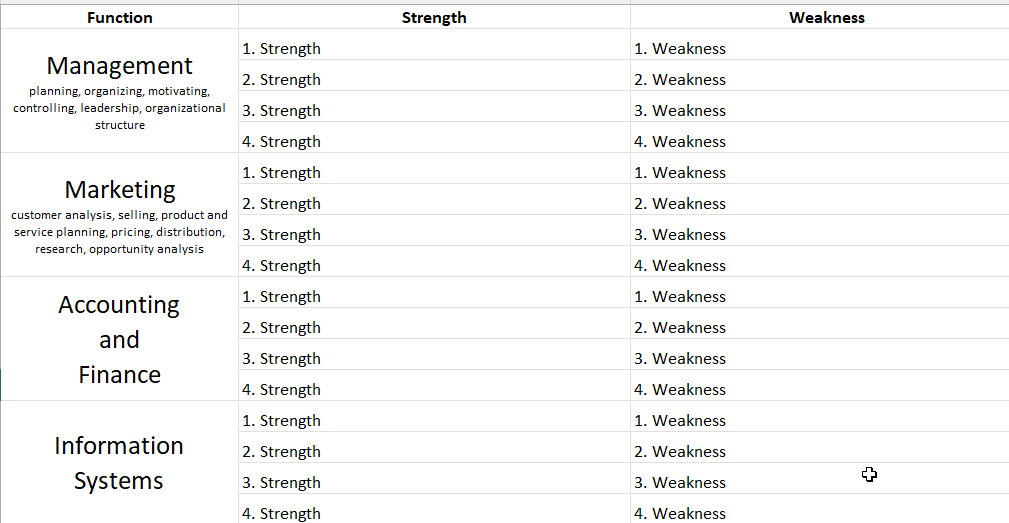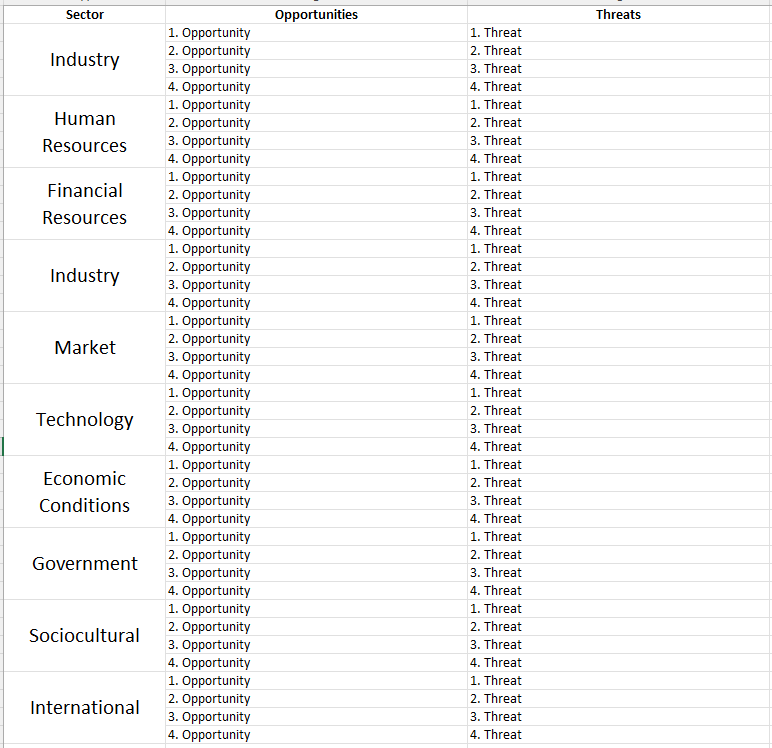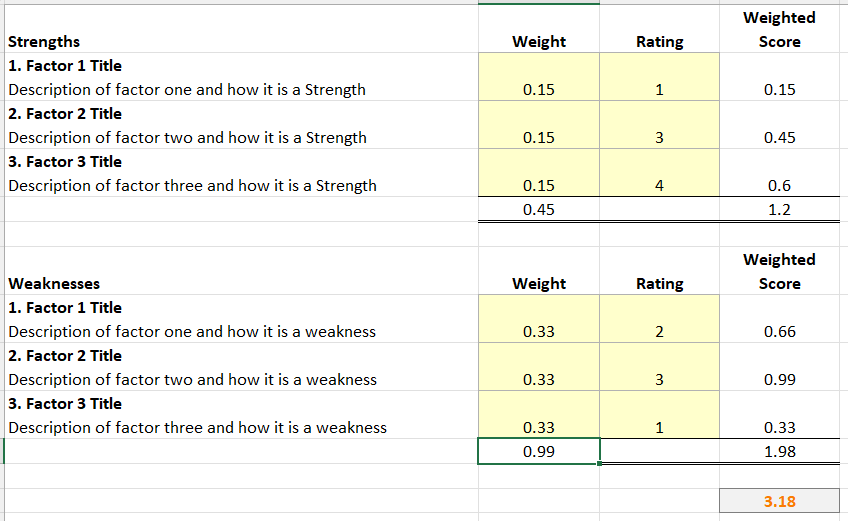The cornerstone of any decision making process is to know the environment in which you work. However, “knowing” your environment simply is not enough – in terms of strategic management, anyways. What we need is a way to list these factors, rate them relative to one-another, and determine how we stack-up when it comes to meeting the challenges of the environment.
Fortunately, we have a couple tools for that… The Internal Factors Evaluation (IFE) Matrix and the External Factors Evaluation (EFE) Matrix. Before we get started, we need to address some often confused terms: Strength, Weaknesses, Opportunities, and Threats (SWOT). Many believe they understand what these term mean…please…don’t skip this!
- Strength/Weaknesses – This refers to the strengths and weaknesses unique within in your own organization. For example: “Lack of Talent” would be a weakness. However, “A weakening economy” would NOT be a weakness as it affects everyone, not just your organization.
- Opportunities/Threats – This refers to the opportunities and threats common across all players in your industry. For example: “Projected nationwide shortage in wheat crops” is an industry threat whereas “Inability to purchase wheat crops in quantity” is a unique company’s weakness.
See my SWOT post for more information
Okay…Now that we have that out of the way, lets get started!
The first step is to list your Internal and External Factors. One way to keep this organized (and ensure that you don’t miss anything) is to use an internal and external chart like the following:


Using each of these categories, we generate an IFE and EFE matrix. The difference between the above and the IFE/EFE matrix is the latter is weighted. First, copy the environment matrix data into the IFE/EFE template. Next, assign a weight to each factor (e.g. how much should this really affect us or the industry). Finally, assign a rating (1 to 4) to each factor; 1 being the worse, 4 the best.

The end result of this analysis is the orange number you see above. In this case, we can say that this organization is successfully exploiting its strengths and mitigating its weaknesses. In general, we want this number to be above 2.5. We repeat this with external factors.
So what did we really do here? First we listed all the factors that we think are important to us, then we explained why with individual line items, and finally we rated the environment. It’s important to remember these numbers are generally subjective. Take your time and be ready to defend the numbers!